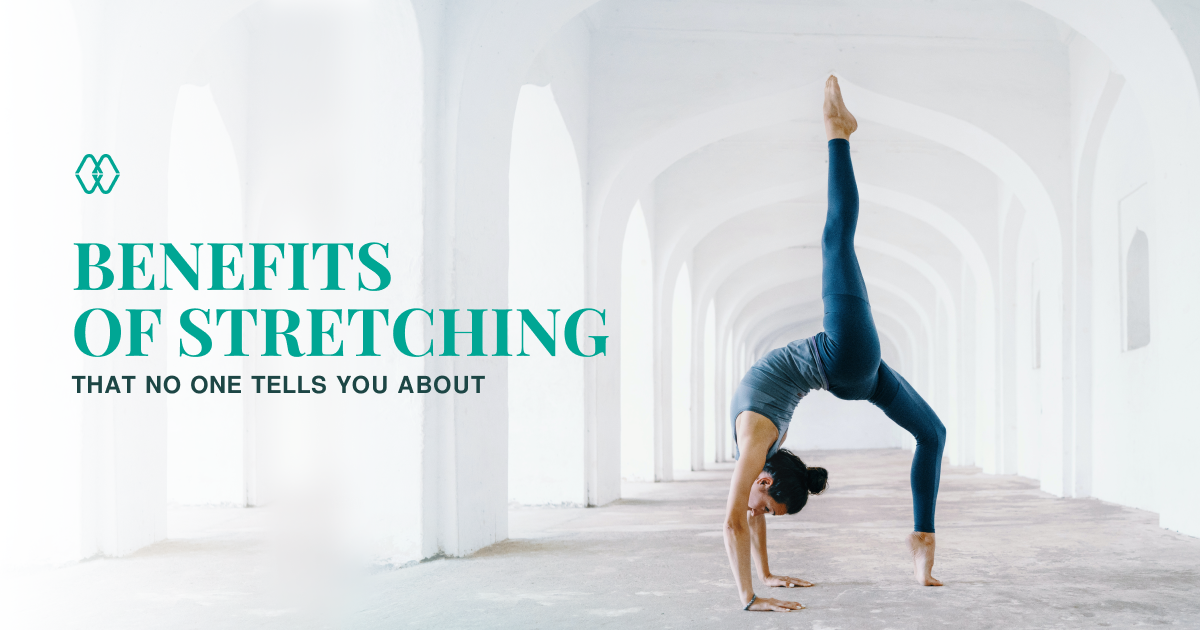
There’s enough evidence to suggest that for many decades, warriors always used to stretch before going on a battle. They believed that this short exercise would improve their combat abilities and help them fight the enemy better.
Nowadays, it is safe to say that stretching is universally considered to be a crucial part of any workout. Yet, the majority of us dismiss and skip it quite often, if not always. Studies show that regular stretches have countless benefits to both your physical as well as your mental health. Before delving deeper into the nitty gritty details, let us first explain what we mean by the term.
In short, stretching is a natural and instinctive physical movement that leads to the lengthening of a group of muscles. It is usually accompanied by yawning and is performed not only by humans but also by a large portion of animals.
Here are some scientifically-backed information relating to the benefits of stretching:
- Improves Posture:
Mostly as a consequence of constant bending towards digital devices, the younger generation of today greatly suffers from bad posture. They are used to sitting in a way that will negatively impact their posture and feel uncomfortable sitting straight. It has become an involuntary sort of even evolutionary habit. Fortunately, though, some recent studies have shown that there exists a clear correlation between stretching and good posture. As a matter of fact, those who want to correct their posture are often encouraged by their physicians to spend around 30 minutes each day on stretching exercises.
- Relieves Stress:
You probably have been told millions of times that exercise is good for your body and mind. In fact, when it comes to effective stress management methods, exercising but more specifically stretching ranks top of the list. This is mainly because stress leads to the tightening of your muscles, which in turn results in strong discomfort in the areas of the neck, shoulders, back, and head.
- Eliminates Headaches:
Common headaches can be alleviated with a combination of stretching exercises complimented by an adequate amount of rest. Stretching, in specific, is believed to help fight migraine attacks. Keep in mind though, that not all stretching exercises work. Therefore, it is best to consult your physician beforehand.
- Decreases Risk of Injury:
It is true that working out helps tone your body and strengthen it. However, flexibility is a prerequisite to achieving that. Stretching exercises give you a more flexible body that in turn protects your muscles from being strained. That being said, it is highly recommended to those of you who are already suffering from physical injuries and might want to incorporate stretching into your routine to first consult with a certified trainer about the precise techniques and specifics of such exercises.
- Increases Blood Flow:
Another important point to mention is that stretching increases blood circulation and the oxygen levels in your body that help deliver key nutrients to your muscles. On top of this, it boosts your metabolism and assists in removing wastes like carbon dioxide, ammonia, and uric acid from your body.
- Builds Body Strength:
As previously mentioned, stretching strengthens muscle fibers and improves your overall flexibility. But did you know that through this, you will see improvements in performing high-intensity training exercises with a wider range of motion? As a matter of fact, a new study found that stretching helps enhance one’s physical performance to phenomenal levels, especially when it comes to weight lifting.
- Improves Sleep Cycles:
It’s a well-known fact that every single one of us needs to get enough sleep to function properly. Yet, some of us struggle in this matter. Luckily, one common method to fall asleep is to stretch right before going to bed. Not only does this automatically make you more sleepy, but it also results in an overall higher quality of sleep.
It is advisable to stretch around an hour or so before going to bed, according to the Clinical Lead for the Integrative Care Center at HSS, Anna Ribaudo. Some of the exercises that are ideal for improving your sleep include but are not limited to neck stretch, neck twist, cat-cow, child’s pose, and standing calf stretches, among many others.
- Reduces Cramps:
Muscle cramps and contractions are among the most common kinds of pain that many of us have to deal with, unfortunately. It goes without saying that these experiences can affect your everyday life drastically. For those of you who struggle with muscle cramps and prefer home remedies over painkillers, stretching is the way to go.
Types of Stretching:
There are different types of stretching exercises out there, but the most common ones are:
- Active Stretching: Focusing solely on a target group of muscles. An example would be bending the ankle back and forth.
- Passive Stretching: Maintaining a certain position or pose with your hands. This type of stretching also helps improve your flexibility and balance.
- Dynamic Stretching: Also referred to as movement-based stretching and performed before high-intensity workouts or sports competitions.
- PNF Stretching: Performed only with the help of certified physiotherapists. PNF stretching particularly targets a weakened or damaged group of muscles.
Check MedWay’s Physiotherapy services, mostly centered around the latest rehabilitation techniques in the field.
How to Start your Stretch Routine:
By now, you may be wondering how it is that you start this stretching journey and turn it into an everyday habit of yours. And how often should you actually follow this simple exercise?
The answer is simple - moderation is key. Ideally, adults are encouraged to stretch 3 times per week and make sure that their exercises perfectly target all their muscle groups, namely, the neck, shoulders, chest, trunk, lower back, hips, legs, and ankles. Regarding intensity, it is recommended to spend around 60 seconds on each exercise.